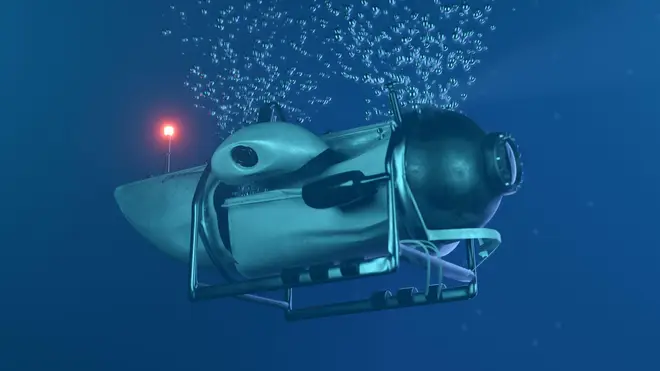
Richard Spurr 1am - 4am
26 July 2023, 13:42

OceanGate's boss Stockton Rush once slammed regulation as an obstacle to innovation but an expert has said last month's Titan implosion was an "avoidable tragedy".
Mr Rush, who was one of five passengers to die on board an OceanGate Titan sub, made no secret of the fact that he loved to experiment with submersible design, viewing regulation as an obstacle.
In a 2019 interview with The Smithsonian, Mr Rush said: "There hasn't been an injury in the commercial submersible industry in over 35 years.
"It's obscenely safe because they have all these regulations," he said.
"But it also hasn't innovated or grown — because they have all these regulations."
The tragedy, which resulted in a catastrophic implosion, also killed British billionaire Hamish Harding, French explorer Paul Henry Nargeolet, businessman Shahzada Dawood and his son, Suleman.
According to submersible expert Patrick Lahey, CEO and co-founder of Triton Submarines, it was "avoidable".

Mr Lahey was one of a number of sub experts that wrote to OceanGate to express concerns about the Titan sub's safety.
"We were all concerned that an accident and incident involving this craft that OceanGate created would be harmful to all of us," he told Insider.
He went on to criticise Mr Rush's approach to regulation, saying the "exact opposite is true."
Read More: DNA tests being carried out on human remains recovered from wreck of Titan submersible
"Certification is not an impediment to innovation...Certification is the crucible within which responsible innovation is possible."
"There is a stark difference between an experimental craft that conforms to no rules and a carefully and thoughtfully designed and engineered machine that is fully certified and accredited," Mr Lahey said.
A number of concerns about Mr Rush's design have been raised since the implosion, most notably in relation to the Titan sub's carbon fibre hull.

The Titan's hull was designed to be shaped like a pill, rather than a more standard sphere shape.
This is was in an attempt to fit more people inside to join the $250,000 trip to see the Titanic wreckage.
The unusual shape of the hull may have caused pressure to distribute disproportionately, which may have caused it to 'collapse like a soda can'.

The hull was also designed using carbon fibre, rather than titanium - a cost-cutting move, the New York Times reported.
However, the carbon fibre hull was attached to other titanium materials, making the two harder to bond.
Under water, carbon fibre would compress at a quicker rate than titanium, placing increased pressure on the glue joints holding the two materials together.